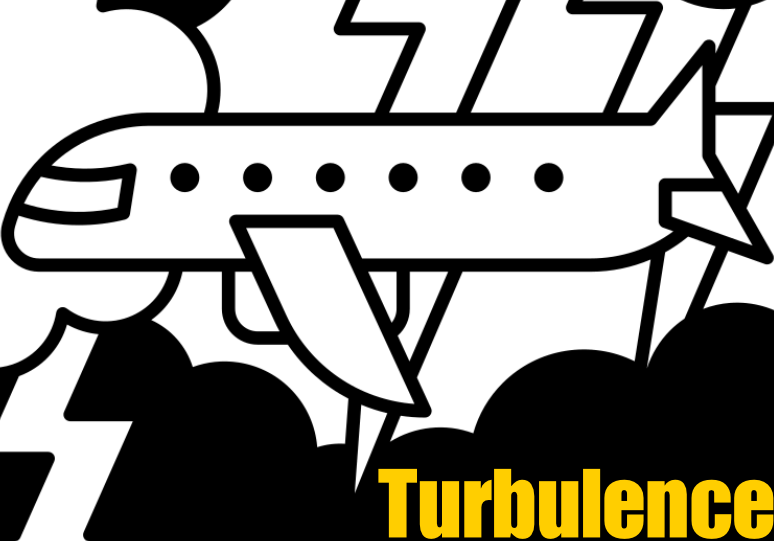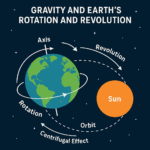
Understanding Turbulence: Why Airplanes Face It and What You Need to Know

Flying is one of the safest modes of transportation, yet many passengers still experience anxiety when their plane encounters turbulence. Turbulence is a common phenomenon during flights, and understanding why it happens can help ease concerns and enhance the flying experience. In this blog post, we will explore the causes of turbulence, the statistics surrounding its occurrence, and what it means for air travel.
What is Turbulence?
Turbulence is the irregular movement of air that results in bumpy or unsteady conditions experienced by aircraft. It occurs when an aircraft flies through areas where air flows with varying speeds and directions. Turbulence can range from mild to severe, but it’s essential to note that airplanes are designed to handle even the most extreme conditions.
Causes of Turbulence
- Convective Turbulence (Thunderstorms):
- Description: Caused by the upward movement of warm air and the downward movement of cold air within thunderstorms.
- Occurrence: Most common during the summer months and in tropical regions.
- Clear Air Turbulence (CAT):
- Description: Occurs at high altitudes (above 15,000 feet) in clear skies, often near the jet stream.
- Occurrence: Responsible for about 75% of turbulence-related injuries on commercial flights. It is challenging to detect with conventional radar.
- Mechanical Turbulence:
- Description: Caused by physical obstructions like mountains, buildings, or terrain that disrupt the flow of air.
- Occurrence: Often encountered during takeoff and landing, especially in mountainous areas.
- Wake Turbulence:
- Description: Generated by the passage of another aircraft, particularly large aircraft like the Boeing 747 or Airbus A380.
- Occurrence: Most likely during takeoff and landing when aircraft are flying close together.
- Mountain Wave Turbulence:
- Description: Occurs when strong winds blow over mountain ranges, creating wave patterns in the air.
- Occurrence: Common in regions with significant mountain ranges.
Turbulence Statistics
- Incidence Rate: According to the Federal Aviation Administration (FAA), approximately 65% of all in-flight injuries are due to turbulence. However, severe turbulence is rare, affecting only about 0.5% of flights annually.
- Passenger Impact: Each year, around 58 passengers in the United States are injured by turbulence, mostly because they are not wearing seatbelts when turbulence occurs.
- Flight Frequency: Moderate turbulence is experienced on about one in every ten flights, while severe turbulence is encountered on one in every 1,000 flights.
- Altitude Factors: Turbulence is more common at cruising altitudes between 30,000 and 40,000 feet, where commercial aircraft typically fly.
Airplane Design and Safety
Modern aircraft are engineered to withstand significant stress and can handle turbulence well beyond what passengers usually experience. Key safety features include:
- Flexible Wings: Designed to flex and absorb the forces generated by turbulence, preventing structural damage.
- Advanced Avionics: Equipped with sophisticated radar and weather systems that help pilots detect and avoid areas of severe turbulence.
- Pilot Training: Pilots undergo rigorous training to manage turbulence, ensuring passenger safety and comfort.
Minimizing Turbulence Impact
- Flight Planning: Airlines use advanced weather data to plan routes that avoid turbulent areas whenever possible.
- Communication: Pilots communicate with air traffic control and other aircraft to share information about turbulence and adjust flight paths accordingly.
- Passenger Preparedness: Passengers can enhance their safety by keeping their seatbelts fastened at all times, following crew instructions, and storing loose items securely.
Future Outlook
Advancements in technology continue to improve the prediction and management of turbulence. Researchers are developing new sensors and algorithms to better forecast clear air turbulence, enhancing safety and comfort for passengers.
Conclusion
While turbulence is an inevitable part of flying, understanding its causes and the statistics behind its occurrence can help demystify the experience. Airplanes are designed to handle turbulent conditions safely, and pilots are well-trained to navigate these challenges. By staying informed and prepared, passengers can enjoy a safer and more comfortable flight.
Hello, I am Aman (: Full Time Traveler :) At the age of 41, in April 2023, fueled by my love for travel and the determination not to remain fixed like a tree, I embarked on a bold journey. Having dedicated 17 years to a corporate job, I chose to transition from a full-time employee to a full-time traveler, driven by the desire to break free from the routine and constraints of a conventional life. Along the way, I not only explored the wonders of travel but also uncovered the transformative power of financial freedom. I realized how it could liberate me to lead a life teeming with adventure, purpose, and fulfillment. Through my blogs, I am passionately sharing my story, aiming to inspire and provide valuable guidance to those, like me, who aspire to weave travel into a life overflowing with limitless possibilities.





















Post Comment
You must be logged in to post a comment.